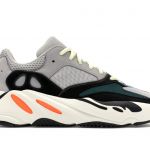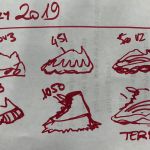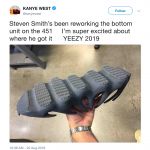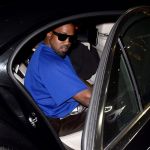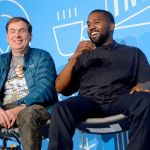
The Godfather of Dad Shoes: interview with Steven Smith
The sneaker guru talks about coronavirus, Kanye and his best work
April 4th, 2020
Talking about Steven Smith means talking about one of the most important figures in the sneaker world of the last thirty years. His is the pencil that conceived the Reebok InstaPump Fury and the Nike Air Zoom Spiridon Caged 2 Retro, his mind behind the Yeezy Boost 700 Wave Runners and the Yeezy 500 as well as many other classics. A graduate of the Massachusetts College of Art and Design, his career took him from one side of the United States to the other, eventually enriching the catalogues of the most diverse brands: from his beginnings in New Balance to working with adidas, to the designs for Nike and his work at Kanye West. Smith's resume is a rundown of iconic models and risky choices. Like when he convinced New Balance to abandon their famous grey in favour of the red and orange of his Super Comps.
From the more classic designs of the New Balance 1500 and 997 to the craziest designs of the Nike Shox Monster, Steven Smith is part of that generation of classic designers, who were born and lived in an era when sketches were still drawn in pencil and the work was long and without those comforts and shortcuts that we take for granted in the digital age. He calls himself a hybrid between an artist and an engineer, perhaps that's also why Steven Smith can boast the title of "Godfather of Dad shoes" or, as he called himself "Kanye's special forces." "I have my mission. I parachute myself in. I'm going in and out," he said a few months ago, describing his work with Kanye and his return to Yeezy, a return to creative freedom and the ability to adapt to any situation. Kanye West's right arm, personally chosen by the Chicago rapper also for his old white guy attitude. "You stay you bro, that's the sauce you add," Kanye told him, aware that he had a living legend in front of him.
We contacted Steven to ask him a few questions during this period of collective lockdown.
Hi Steven, where are you right now and how is America reacting to the Coronavirus Emergency?
I am at my home in Oregon with my family. America is doing everything possible to isolate and hopefully eliminate the virus and its impact as soon as possible. We are staying in the house as much as possible.
Given the global reach of what has been called a pandemic, do you think it will impose any changes in the sneakers’ world?
I'm not sure how much will change. All I see so far is some delays in retail drops. It might it the long run have an impact on China as a sole source of production. Time will tell.
Moving on to your career, can you tell us how did you start this job?
It's funny, I ran track in High School and I wore New Balances, then graduated from University and ended up there as my first full-time job. At the time it was me and another designer named Kevin Brown. It was so cool to be designing the sneakers I actually ran in.
You have been in this business for a long time, how do you have a constant source of inspiration and where do you find it?
I find it everywhere. Music, Fine Art, Architecture, other products. Sometimes it is a direct influence of what I am interested in myself at the moment in my life.
In recent years the sneakers’ world has changed a lot, going from a subculture to a real mass phenomenon. How much has your job changed over the years and how?
It definitely has changed in the way it has matured as an industry. We had very few resources and the processes and materials were very unsophisticated compared to today. It also was very analogue. We had to do all the creation by hand. I used to have to draw the actual mould drawings by hand and then they would be hand-carried to the mould shops. Now we have the ability to have everything digital. And by that I mean not just the design process but all the engineering and technical knowledge is in a central resource. We used to have to start from scratch every time back then. Things can also be done so much faster today. There are are also more companies and people involved now. Back when I started there were only a handful of us as designers. That first group of us defined what this would be as a career.
Over the course of your career, you have worked with many different brands, among which Yeezy undoubtedly stands out. What was it like and how is it to work with Kanye West?
It is a magical time in my career and a true blessing to work with a creative like Kanye. He has been a great liberator of creativity.
If I asked you to choose three sneakers among all those you’ve worked on, which ones would you choose?
Ohhh the Reebok Fury is one of the top ones. The Waverunner with Kanye and then the Nike Crib Mary Jane would be my top 3 I think.
Given the long period of quarantine, would you tell us some reading on sneakers and fashion to keep us busy? But also music, films and documentaries that you are watching in this period.
The Sneaker book that Sneaker Freaker put out is pretty amazing. Elizabeth Sammelhack just dropped a really nice one about collabs. Music at the moment is just about anything. I've been diving into Eric B and Rakim classics and the MC5. I watch The Curse of Oak Island pretty regularly lately. I love archaeological digs and history so this show is pretty intriguing it's just a little slow lately though.






















































